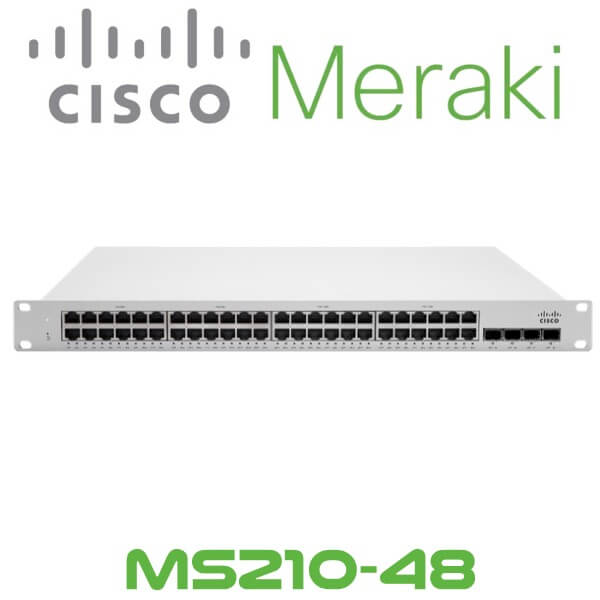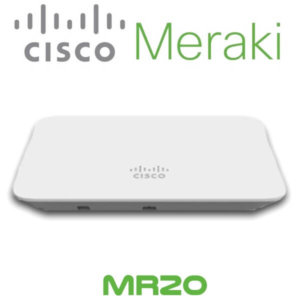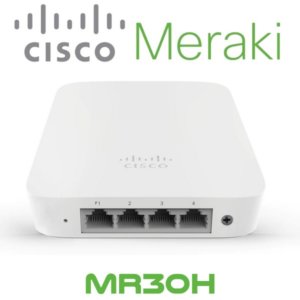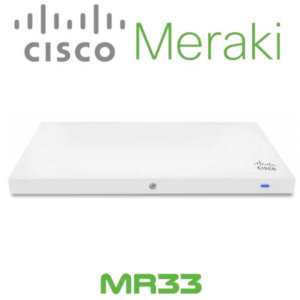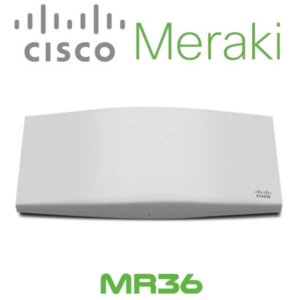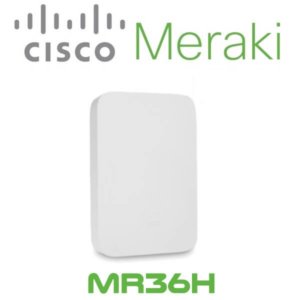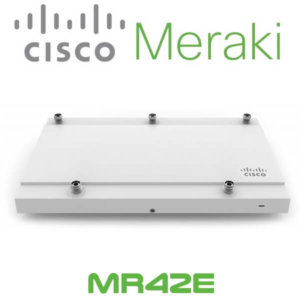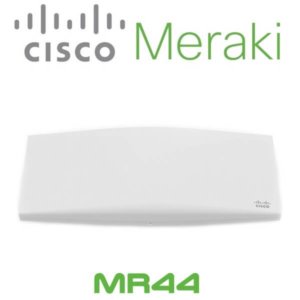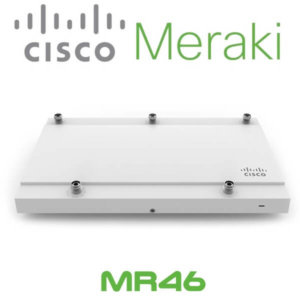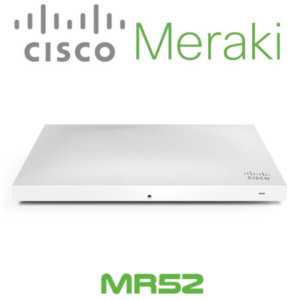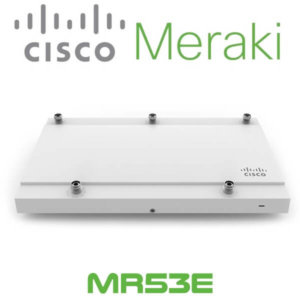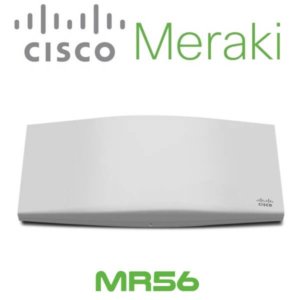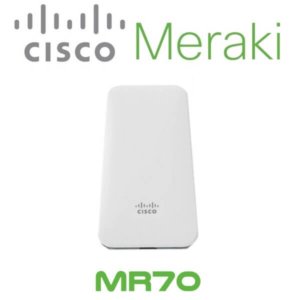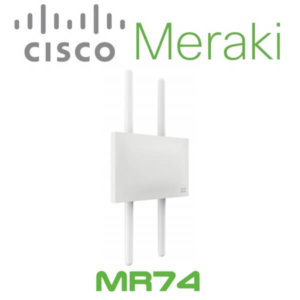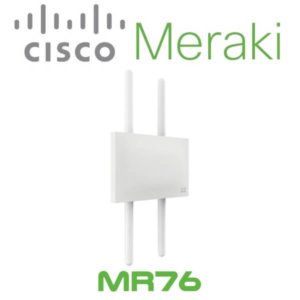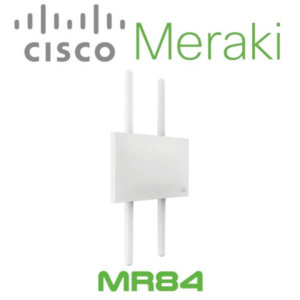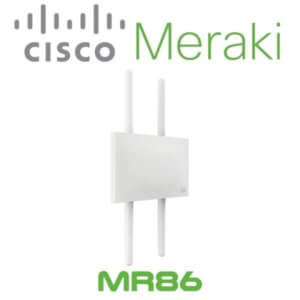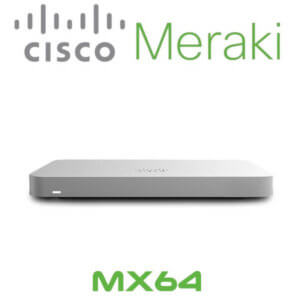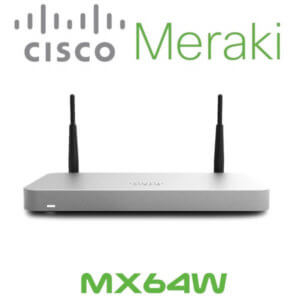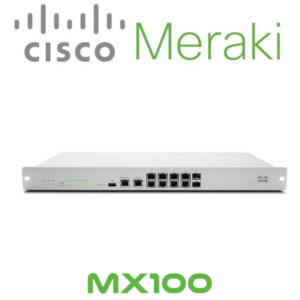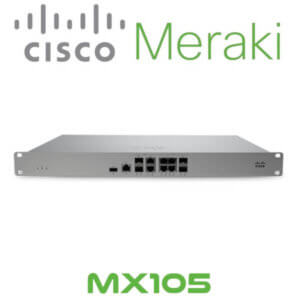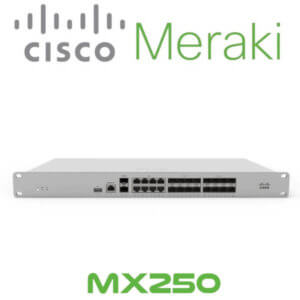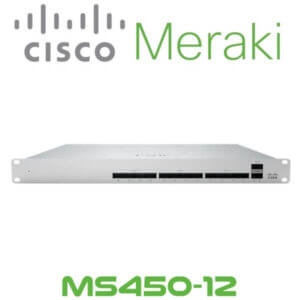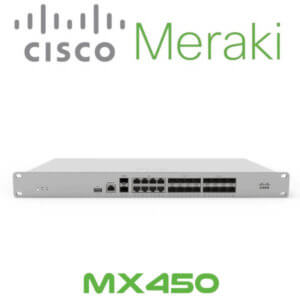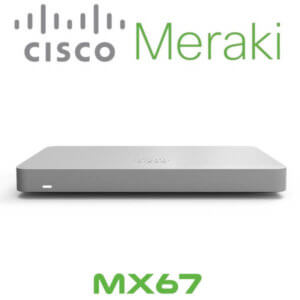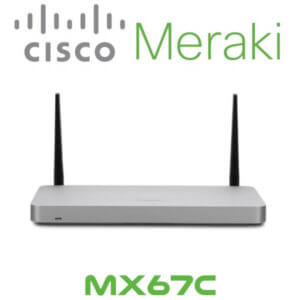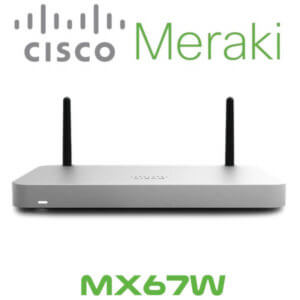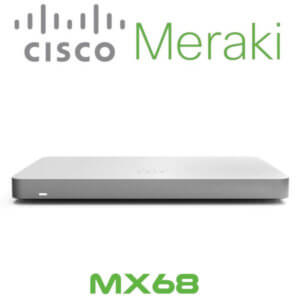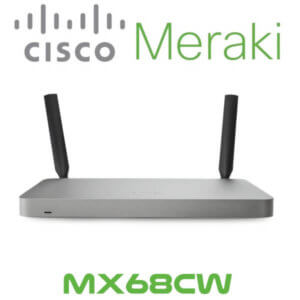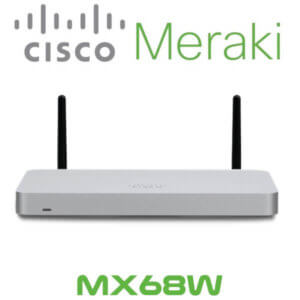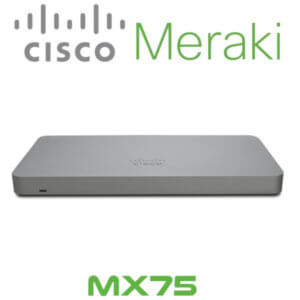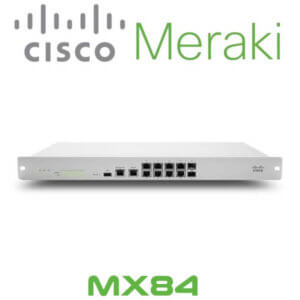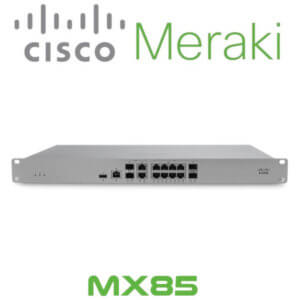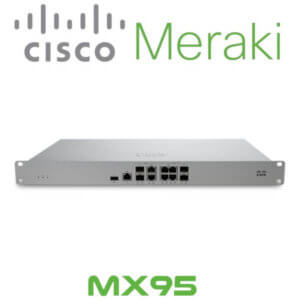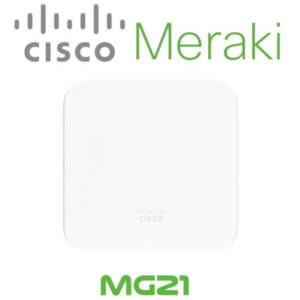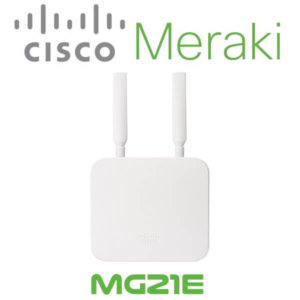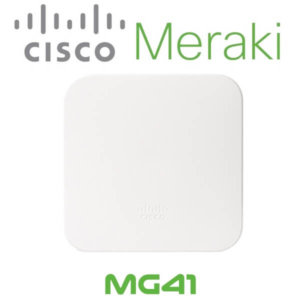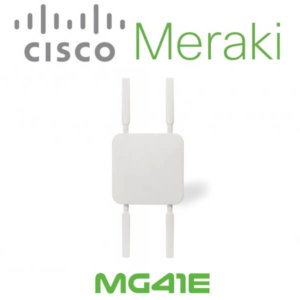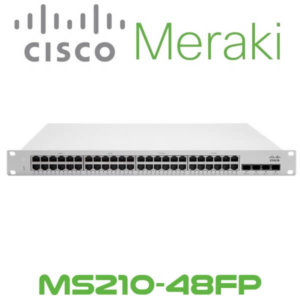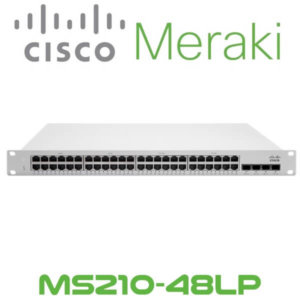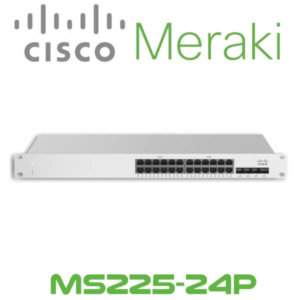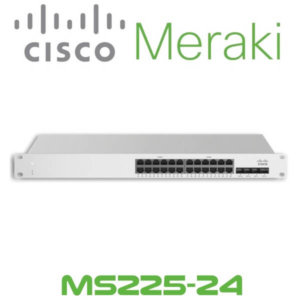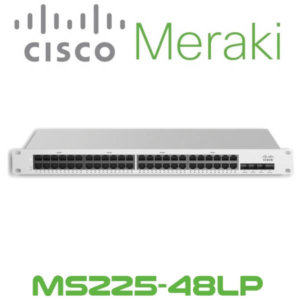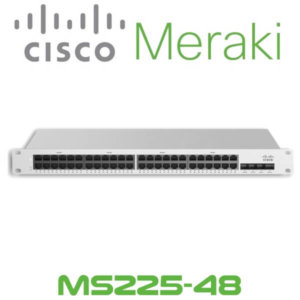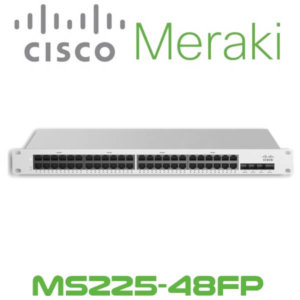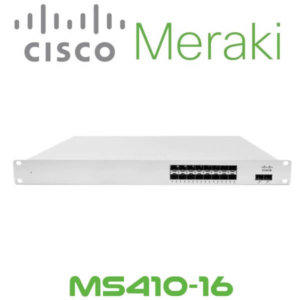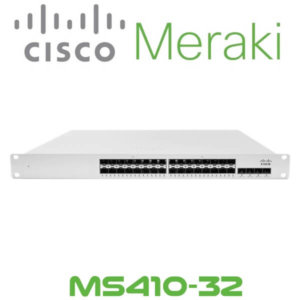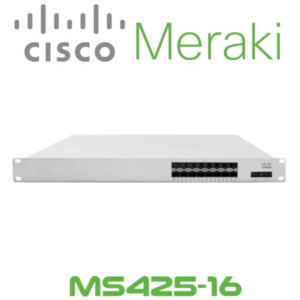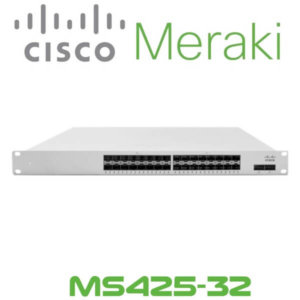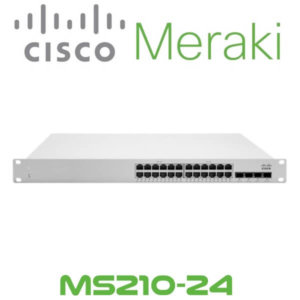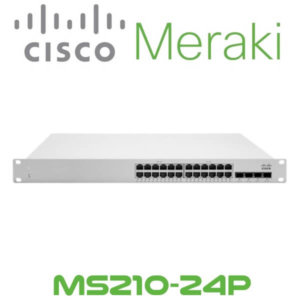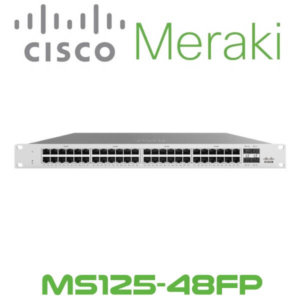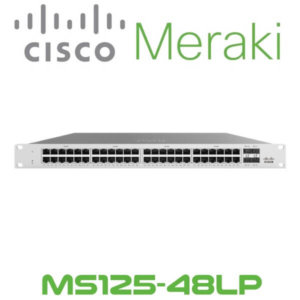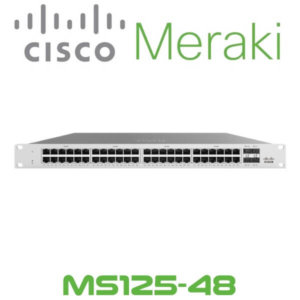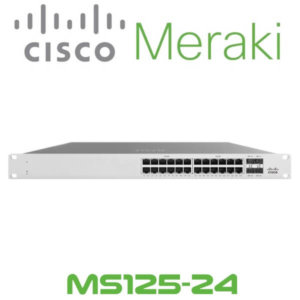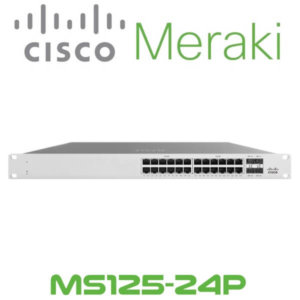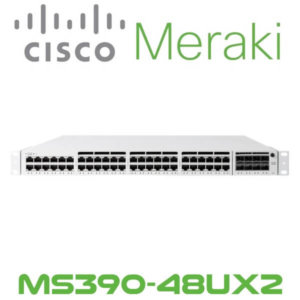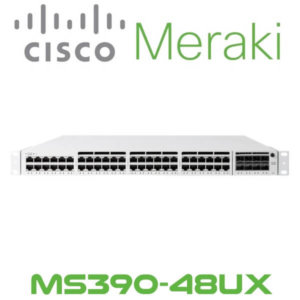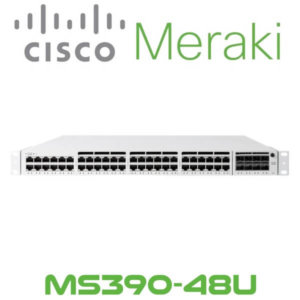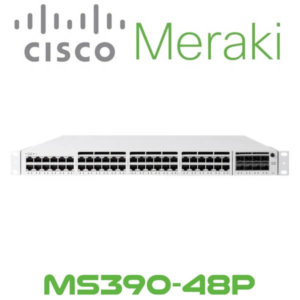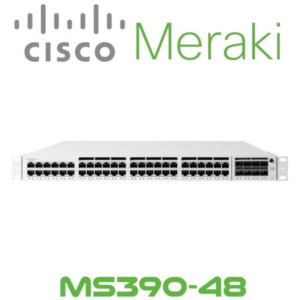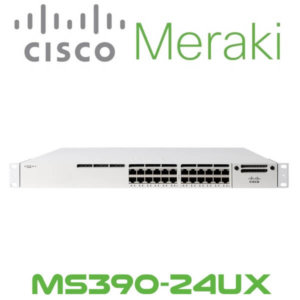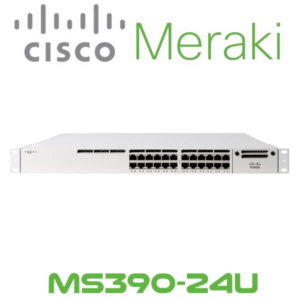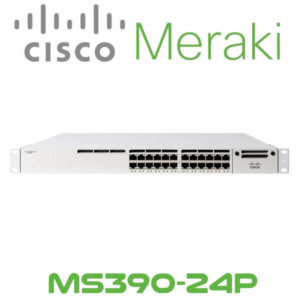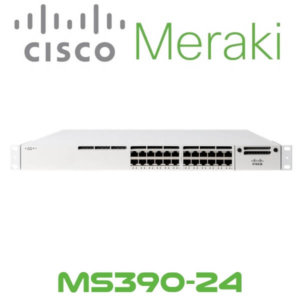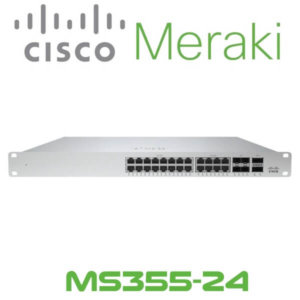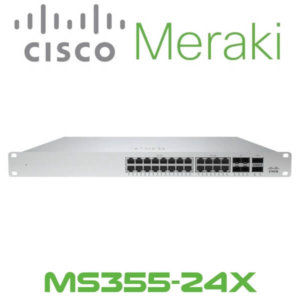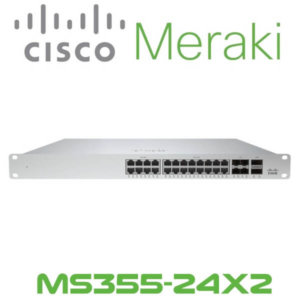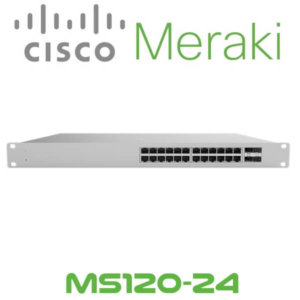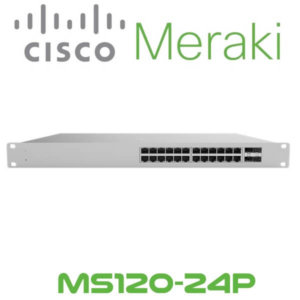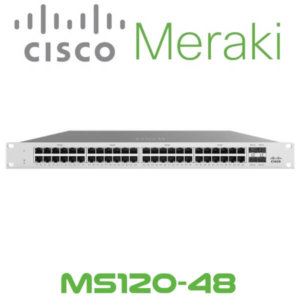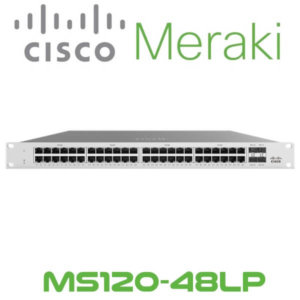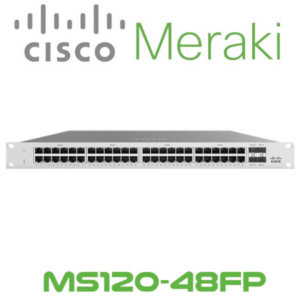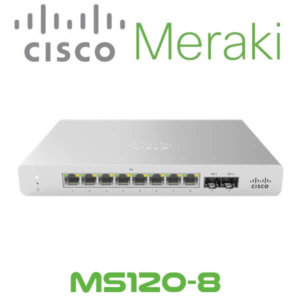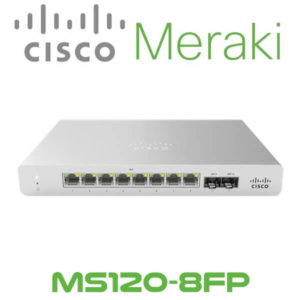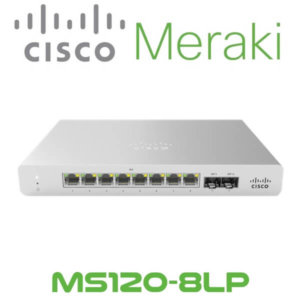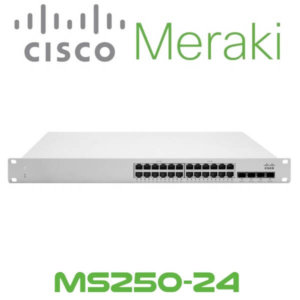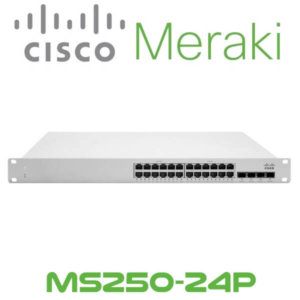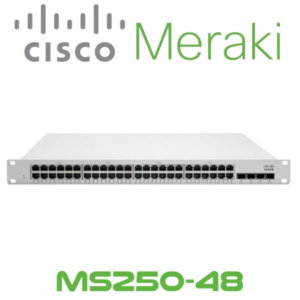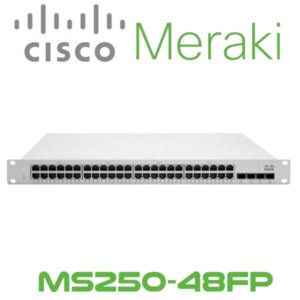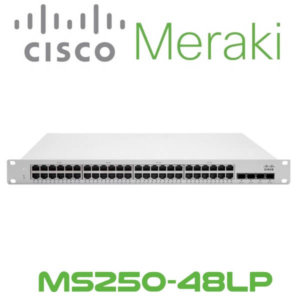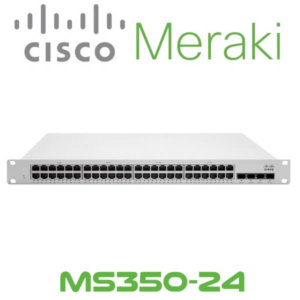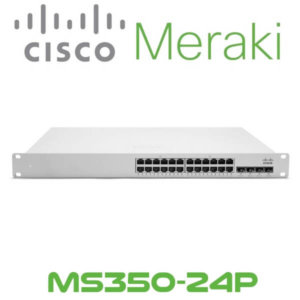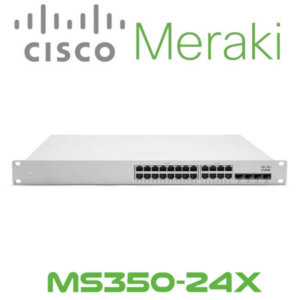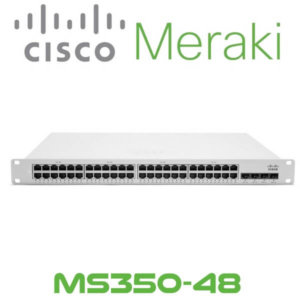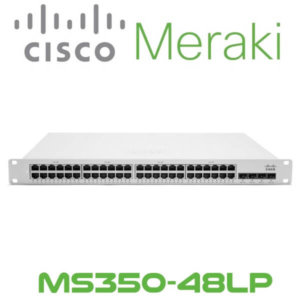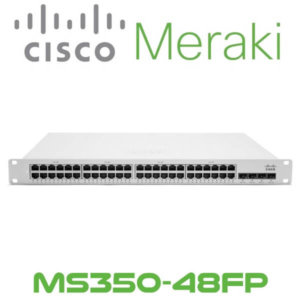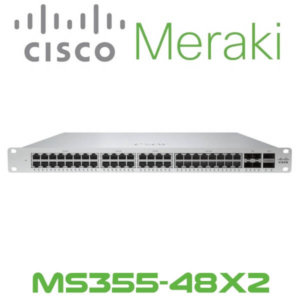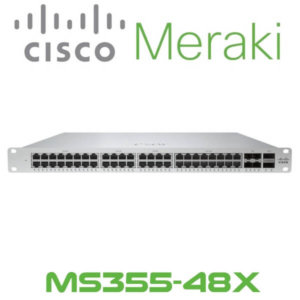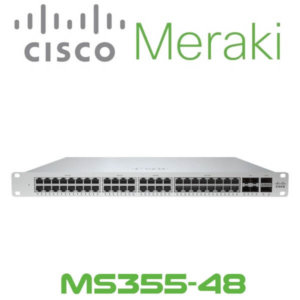Description
Meraki MS210-48 Network Switch Kenya
Meraki MS210-48 Kenya switches provide Layer 2 access switching for branch and small campus locations. The MS210 includes 4 x 1G SFP uplinks and physically stacks with the MS225 to gain access to its 10G uplink. This family also supports an optional, rack-mountable PSU (Cisco RPS-2300) for power redundancy requirements. Meraki switches are built from the ground up to be easy to manage without compromising any of the power and flexibility traditionally found in enterprise-class switches. The Meraki MS210-48 Kenya is managed through an elegant, intuitive cloud interface, rather than a cryptic command line. To bring up a Meraki switch, just plug it in; there’s no need for complicated configuration files or even direct physical access to the switch. Meraki’s centralized management gives administrators deep visibility into the network and how it’s used. See which switches are near capacity across hundreds of sites. Find all configuration changes made by a certain person with instant search.
MS210-48 Features
Cloud Managed Networks
Meraki’s hardware products are built from the ground up for cloud management. As a result, they come out of the box with centralized control, layer 7 device and application visibility, real time web-based diagnostics, monitoring, reporting, and much more. Meraki networks deploy quickly and easily, without training or dedicated staff. Moreover, Meraki MS210-48 Kenya provides a rich feature set that provides complete control over devices, users, and applications, allowing for flexible access policies and rich security without added cost or complexity.
Cloud Management Architecture
Meraki’s architecture provides feature rich network management without on-site management appliances or WiFi controllers. Every Meraki device – including wireless access points, Ethernet switches, and security appliances – connects over the Internet to Meraki’s datacenters, which run Meraki’s cloud management platform. In place of traditional command-line based network configuration, Cisco Meraki provides a rich web based dashboard, providing visibility and control over up to tens of thousands of Meraki devices, anywhere in the world. Tools, designed to scale to large and distributed networks, make policy changes, firmware updates, deploying new branches, etc. simple and expedient, regardless of size or location. Cisco Meraki’s real time protocols combine the immediacy of on-premise management applications with the simplicity and centralized control of a cloud application.
Powerful Insight and Troubleshooting Tools
Meraki’s cloud architecture delivers powerful insight and includes live tools integrated directly into the dashboard, giving instant analysis of performance, connectivity, and more. Using live tools, network administrators no longer need to go on site to perform routine troubleshooting tests. Visibility into devices, users, and applications gives administrators the information needed to enforce security policies and enable the performance needed in today’s demanding network environments.
Branch & Campus Access
- Physical stacking with support for up to 8 stack members for built-in redundancy, performance, and access to 10Gbps uplinks when stacked with an MS225 switch
- Quality-of-Service (QoS) to prioritize mission critical traffic such as voice and video
- Voice VLAN support for simplified VoIP deployments
- CDP, LLDP advertisement and snooping, with detailed neighbor discovery and visibility
- Port Mirroring support for monitoring network traffic at line rate
- IGMP Snooping to optimize network performance for multicast applications
- Link Aggregation Control Protocol (LACP) for high-capacity trunking, with Multi-chassis (MLAG) support on stacked switches
Network Security
- IEEE 802.1X, MAB, and Hybrid authentication support for wired access control with RADIUS server monitoring
- Port security and MAC whitelisting
- Change of Authorization (CoA) and RADIUS accounting support
- DHCP snooping to prevent users from adding unauthorized DHCP servers on the network
- Rapid spanning tree, BPDU guard, root guard, and other safeguards to help prevent misconfigurations and reduce convergence time
- Per port VLAN configuration
- Multiple administrative roles with sophisticated security policy management
Network Troubleshooting & Automation
- Virtual Stacking lets administrators manage up to thousands of ports in a single interface without having to physically connect stack members
- Configuration templates for rapid, zero-touch provisioning and auditing of all sites
- Network Topology for automatic and interactive network mapping
- Remote cable testing, packet capture and client discovery
- Automatic and scheduled firmware upgrades for the complete network
Converged Voice, Video and Data Environments
The Meraki MS210-48 Kenya is designed to unify data, voice, and video onto a single IP backbone. All Meraki switches support rich quality of-service (QoS) functionality for prioritizing data, voice, and video traffic. The switches support eight class-of-service (CoS) queues on every port, enabling them to maintain end-to-end traffic prioritization. PoE models provide power VoIP telephones, IP security cameras, wireless access points (APs), and other IP devices. In addition, using CDP and LLDP, PoE power is intelligently budgeted to maximize the number of PoE clients supported. For the most power-hungry applications, support for Cisco UPoE is also available. The Meraki MC products work flawlessly with Meraki switches, and create a unique and powerful experience to installing, supporting and troubleshooting VoIP technology
Application Layer Visibility
Meraki is the only switch to include integrated Layer 7 fingerprinting. Identify hundreds of applications from business apps to BitTorrent and YouTube. User fingerprinting with Google-like search allows administrators to easily identify and control individual users, PCs, iMacs, iPads, Androids, and other devices. This unprecedented visibility allows optimizing of network resources and maintaining optimal network performance.
Unified Software Architecture
Meraki switches run the same Meraki operating system used by all of Meraki’s products. The use of a common operating system allows Meraki to deliver a consistent experience across all product lines. When connected, MS210 switches automatically connect to the Meraki cloud, download configuration, and join the appropriate network. If new firmware is required, this is retrieved by the switch and updated automatically. This ensures the network is kept up-to date with bug fixes, security updates, and new features.
Designed for Reliability & Environmental Efficiency
The Meraki MS210-48 Kenya is designed for reliable, long-lived operation in wiring closet environments, which may be prone to high temperatures and limited ventilation. By minimizing total component count and only using proven switching silicon, Meraki is able to deliver highly reliable products with exceptional mean time between failure (MTBF) ratings. Each Meraki switch also operates with a split-plane architecture, where silicon-based switching and data forwarding are separated from software-based control and management. By decoupling the underlying switching logic from control, each unit is able to deliver wire-speed switching even when advanced software features such as Layer 7 host and OS fingerprinting are enabled.
Distributed Branches & Remote Sites
- Meraki’s cloud-based system makes it easy to manage a single switch, or thousands of distributed switches, from a single interface.
- Troubleshoot problems remotely, e.g., find which port has a bad cable attached.
- Add or replace switches without having to send a technician onsite. Switches automatically download their current configuration as soon as they are connected to the network.
- Receive email alerts or SMS messages whenever there’s a problem at a remote site.
Campus Edge
Meraki MS210-48 Kenya is ideal for small and large scale campus deployments, where reliability, scalability, and manageability are top priorities.
- Virtual Stacking lets administrators manage up to thousands of ports in a single interface without having to physically connect stack members.
- Get alerts if any switch fails or goes offline, before users complain.
MS210-48 Specifications
| Product Name | Meraki MS210-48 1G L2 Cld-Managed 48x GigE Switch |
| Product Type | Ethernet Switch |
| Manageable | Yes |
| Ethernet Technology | Gigabit Ethernet |
| Number of Total Expansion Slots | 4 |
| Product Family | MS210 |
| Stack Port | Yes |
| Media Type Supported | Twisted Pair
Optical Fiber |
| Total Number of Network Ports | 48 |
| Redundant Power Supply Supported | Yes |
| Expansion Slot Type | SFP |
| Form Factor |
|
| Power Source | Power Supply |
| Layer Supported | 3 |
| Environmentally Friendly | Yes |
| Environmental Certification | RoHS |
| Compatible Rack Unit | 1U |
| Number of SFP Slots | 4 |
| Modular | Yes |
| Uplink Port | Yes |
| Shared SFP Slot | No |
| Port / Expansion Slot Details |
|
| Height | 1.7″ |
| Width | 19.1″ |
| Depth | 13.4″ |
| Product Series | MS210 |
| Product Model | MS210-48-HW |
| Network Technology |
|


